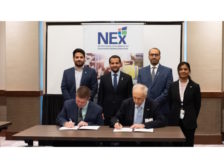Home » carbon reduction
Articles Tagged with ''carbon reduction''
Enhance your expertise with unparalleled insights.
Join thousands of building professionals today. Shouldn’t you know what they know?
SUBSCRIBE TODAY!Copyright ©2025. All Rights Reserved BNP Media.
Design, CMS, Hosting & Web Development :: ePublishing



.jpg?height=168&t=1703026308&width=275)





